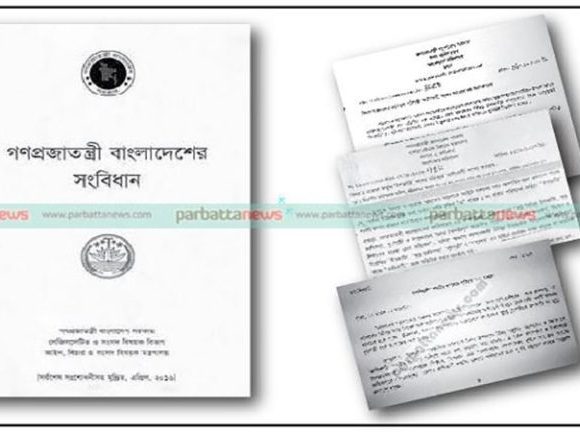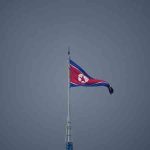Does Bangladesh Need an Indo-Pacific Strategy?

COMMODORE KAZI EMDADUL HAQ (Retd)
Introduction
Bangladesh has become the seat of discourse amidst the great powers’ competition in the Indo-Pacific. Visits by the newly appointed Chinese foreign minister at midnight and high-level US delegations created curiosity among journalists and interlocutors. Social media, Twitter, television, and interlocutors have built up the visits with lots of speculations, passing comments and views from their points of interpretation. Intellectuals and YouTubers are trying to interpolate the logic of great powers’ confluence in Bangladesh and the connotation of the Indo-Pacific Strategy (IPS). The visits from the US and China to Bangladesh after the adoption of the UNSC Resolution on Myanmar on 21 December 2022 have given rise to many theories of unresolved issues that placed Bangladesh in a geopolitically crucial position. Amidst this media hype, Bangladesh’s foreign minister realised the need for a “strategy” for the Bay of Ben gal (BoB). Does Bangladesh need a strategy? If so, why? We need to analyse from the perspective of Bangladesh and, at the same time, the US policy towards Bangladesh.
Indo-Pacific Strategy of the United States
Before making a strategy, it needs a careful study of the Indo-Pacific approach of the United States. The United States generally pursues Bangladesh and other littoral countries to participate in Indo-Pacific roles. The crucial point is that the US-led IPS has not been known to sign or invited any countries to join, contrary to the China-led Belt and Road Initiative (BRI). China invited the nations to join and sign BRI. On the other hand, IPS is a strategy or concept in which the United States desires countries to participate in the Indo-Pacific affairs and uphold the “Free and Open Indo-Pacific (FOIP)” policy. The IPS of the United States, February 2022, proclaims that the Indo-Pacific region stretches from the US West Coast to the Indian Ocean without clarifying the north and southern boundary. However, Canada’s Indo-Pacific Strategy states that the region encompasses 40 countries, including Bangladesh and landlocked countries Bhutan and Nepal. China is included in the region, but surprisingly Canada and Russia, or any other countries on the East Coast of the Pacific, were not included in the IPS, although littoral to the Pacific. Ideally, the US should welcome all countries of the Indo-Pacific to play a powerful role in upholding the FOIP policy. The very establishment of the Indo-Pacific concept has become obscure to comprehend. The IPS has five objectives (Page: 7) which target three areas to focus on: FOIP, security, and economy. However, the majority of thinktanks would agree that China is claiming almost all of the South China Sea (SCS) by drawing a 9-dash line and seizing control of islands (mainly Spratly and Paracel) in the SCS, coercing the United States into countering China through some strategy which later came out to be the IPS. The United States advocates all countries of the region have equal rights and “Freedom Of Navigation Operations” (FONOP) in all the seas of the Indo-Pacific according to the “United Nations Convention on the Law of the Sea (UNCLOS), 1982”. China also alienated most Association of South East Asian Nations (ASEAN) by pushing the 9- dash line into their Exclusive Economic Zone (EEZ). The United States, its allies, and partners saw this as China’s unlawful aggression in the SCS and started FONOP in the SCS to challenge China’s territorial claim. As such, China considers the IPS a policy of the US containment of China. So the great power competition between China and the United States has pushed the neutral littoral countries to choose the sides to support. Most Asian countries are hesitant to participate in IPS due to fear of China’s economic retaliation. Because in the last two decades, China engaged most Asian countries with substantial financial investments under the banner of BRI, and they know the severe consequences of withdrawing China’s support.
Action Plans of the United States
The United States has also outlined action plans in IPS to implement the US strategy. The aggressive advocacy of the United States is to strengthen ties among the “allies” and “partners” of the Indo-Pacific region through various programs and bilateral agreements. To achieve the objectives of the Indo-Pacific, the United States sporadically enforced forums, like, Quad (Quadrilateral Security Dialogue), AUKUS (Australia, United Kingdom, United States), IPEF (Indo-Pacific Economic Framework). Although not mentioned explicitly, these are the elements of IPS to achieve the US objectives. In addition to these forums, the United States also pursues countries to make military cooperation by signing agreements with GSOMIA (General Security Of Military Information Agreement) and ACSA (Acquisition and Cross Servicing Agreements). The United States made GSOMIA agreements with 76 countries and ACSA with over a hundred countries worldwide, including India and Sri Lanka. Indo-Pacific is a vast region where logistic support is a prime concern while US ships are away from homeport. Through these aforementioned agreements, the United States effectively strengthened the partnership; thus, it helped achieve the objectives of IPS, mainly to wean the neutral countries away from Chinese influence and carry out uninterrupted FONOP. Indo-Pacific Strategy of Other Countries Many countries brought out their Indo-Pacific strategy unitedly, rather than individually. Nations prefer inclusive Indo-Pacific, which means all littoral countries to be included, contrary to the intent of the United States towards China. Although most ASEAN countries are not very happy with China’s 9-dash line, the ASEAN forum wants the Indo-Pacific to be inclusive of China. ASEAN has named the concept “outlook on the Indo-Pacific” based on the principles of strengthening ASEAN centrality. Similarly, the EU also brought out the “EU strategy for cooperation in the Indo-Pacific”, in place of an individual strategy per country. In South Asia, such an initiative has yet to be taken The Security World February 5, 2023 13 either by SAARC (South Asian Association for Regional Cooperation) or BIMSTEC (Bay of Bengal Initiative for Multi-Sectoral Technical and Economic Cooperation). Indian Prime Minister Modi does not want to see Indo-Pacific as a “strategy” or directed against any country, and he launched Indo-Pacific Oceans Initiative (IPOI) in 2019, where he used “ocean initiative” instead of “strategy”. Great economic powers like Canada and Japan also brought out strategies separately. The central message of all of the Indo-Pacific concepts is believed by many to ensure freedom of navigation (rules-based order), security, and economic prosperity through shared participation by all, which is similar to the IPS of the United States. Instead of an individual approach, countries preferred a collective one that conveyed a powerful message. The major controversy of IPS among the countries is appeared to be simmering over a single issue which is “inclusive” or “exclusive” of China. Specifying this inclusivity/exclusivity in the doctrine could be fatal for weak developing countries of the Indo-Pacific, for which these countries abstained from making such doctrine individually. It is not obligatory for nations to make such a doctrine to achieve interests in the Indo-Pacific. As more than 90% of Bangladesh’s goods flow through BoB, safeguarding Sea Lines of Communication (SLOC) would be the immediate concern of Bangladesh. For that purpose, Bangladesh might need a strategy in the near future, which the Bangladesh foreign minister has expressed, “we will also have our own strategy on how we want to see our Bay of Bengal and beyond”. The Bangladesh Navy mainly operates in the BoB but goes beyond during “goodwill visits” or for carrying out exercises with friendly navies. Bangladesh Navy has put up its best effort to make a maritime strategy for a long time. The “Forces Goal 2030”, an ambitious plan to modernise Bangladesh Armed Forces, has outlined the maritime strategy, which may further broaden.
Indo-Pacific Strategy and its Impact on Bangladesh
Let’s look at the IPS of the United States, and where it placed Bangladesh to achieve US objectives. Is Bangladesh included as a US partner or an ally? The partnership is less formal than an alliance, also called a “strategic partnership”. The United States has five treaty alliances in this region: Australia, Japan, the ROK, the Philippines, and Thailand. The US strategy categorically mentioned the US leading regional partners are India, Indonesia, Malaysia, Mongolia, New Zealand, Singapore, Taiwan, Vietnam, and the Pacific Islands. Where is Bangladesh? Despite the fact that the United States is Bangladesh’s number one export country and third largest trading country, Bangladesh is not a partner of the United States. Is the United States treating Bangladesh in the same category as Myanmar? If so, why? In fact, the relationship between the United States and Bangladesh is like a “stepbrother” (unofficial comment by a US diplomat where I was present), and it has remained like this since the birth of Bangladesh till today. Former US President Richard Nixon and his secretary Henry Kissinger did not want an independent Bangladesh. Even after the independence, the legacy of Nixon continued in Bangladesh. After coming to power, the Biden administration didn’t invite Bangladesh to US President Joe Biden’s Summit for Democracy, held in December 2021. In contrast, Pakistan was invited to that summit, but after a year, Biden described Pakistan as the “most dangerous country” in the world. The United States was supposed to impart sanctions against India under CAATSA (Countering America’s Adversaries Through Sanctions Act) for buying the S-400 missile system from Russia, but later the US exempted India from CAATSA; India continued buying Russian oil and gas at a subsidised rate which helped maintain Putin’s economy during the Russian invasion of Ukraine; still, India remained the leading partner of the United States and consented to India as a net security provider in the Indian Ocean. To fulfill the “Forces Goal 2030”, Bangladesh cannot buy military equipment from the United States unless Bangladesh signs two defence agreements with the United States: GSO MIA and ACSA. The US officials termed them “foundational agreements” meant to strengthen defence relationship between the two countries. Although seething with bitterness, Bangladesh may have to accept these realities and endure some unwanted advice without pointing fingers at the United States’ problems at home. Due to its economic engagement with the United States, Bangladesh must maintain its support; perhaps, both countries have that understanding. The United States also supports Bangladesh through various programs. In September 2022, cohosted by both the US Army and Bangladesh Army, the 46th Indo-Pacific Armies Management Seminar (IPAMS) was held in Bangladesh, where 23 nations’ Indo-Pacific Strategy and its Impact on senior army officers gathered. Many conversationalists postulated that the United States invited Bangladesh to join Quad; this was, in fact, false. Quad members never invited any countries to join in Quad, let alone Bangladesh – it is a farfetched idea of interlocutors. It was also an inapt comment by the Chinese ambassador to Bangladesh to warn Bangladesh not to join in Quad. Even the United States did not invite Bangladesh to the Indo-Pacific Economic Framework (IPEF), launched on 23 May 2022 in Tokyo by Joe Biden. Despite the facts above, the United States wants to see Bangladesh participate in various Indo-Pacific roles.
UN Resolution on Myanmar
Another bizarre idea floated by some writers is establishing a no-fly zone over Myanmar. This idea became popular among the readers, especially after the UN Security Council adopted Resolution 2669 on Myanmar on 21 December 2022, which contains clauses related to Bangladesh that says to “create conditions necessary for the voluntary, safe, dignified and sustainable return of Rohingya refugees” (Serial 10 of the Resolution). Twelve votes adopted the resolution in favour, and as usual, China, India, and Russia abstained. The United States is clearly recognising the looming threat for the Indo-Pacific region, expressed in the resolution: “underlining the risks that the Rohingya situation poses for the wider region”. Although this adoption of this resolution does not imply any end to the Rohingya crisis because to take further action, UNSC needs to pass another resolution where both China and Russia would come with their mighty “veto” power. Following the adoption of the resolution, it became popular discourse in the media on the issue of recent past visits from both the United States and China. It is implausible that the United States would take any actions in Myanmar, like invading Iraq, bypassing the UNSC approval. The US intention appears to be balanced, not alienating ASEAN. The recent visit to Bangladesh by US Assistant Secretary of State for South and Central Asian Affairs, Donald Lu desires Bangladesh to participate perhaps aggressively in Indo-Pacific affairs. However, his visit, followed by China’s new Foreign Minister Qin Gang’s brief stopover in Dhaka on 10 January 2023, had anything to do with that is yet to unfold. But the meeting at midnight between two foreign ministers has raised eyebrows among the thinkers.
Conclusion
Indo-Pacific is not a club that Bangladesh can join; rather, it is a US strategy where the United States always invites littoral countries, including Bangladesh, to participate in various roles, and Bangladesh’s response is reasonably fair. It also appears that Bangladesh would not want to make any move that would be perceived as colluding with the present relationship between Bangladesh and China. Bangladesh ought to convey a strong message in line with the foreign policy of Bangladesh – “malice towards none” – that the engagement with both China and the United States is for the economic interests of Bangladesh and not to drag Bangladesh towards the great powers’ competition. The Indo-Pacific Strategy of the United States remains obscure to many, and they believed it to counter China. Making a doctrine based on an opaque IPS would be a daunting task for Bangladesh and could be counterproductive. At best, it would be a prudent idea to make some strategy for the Bay of Bengal, instead of the whole Indo-Pacific, in line with the maritime interests of Bangladesh.
Commodore Kazi Emdadul Haq, BSP, ndu, psc, BN (Retd), Founding Member, Bangladesh Institute of Maritime Research and Development (BIMRAD).

















